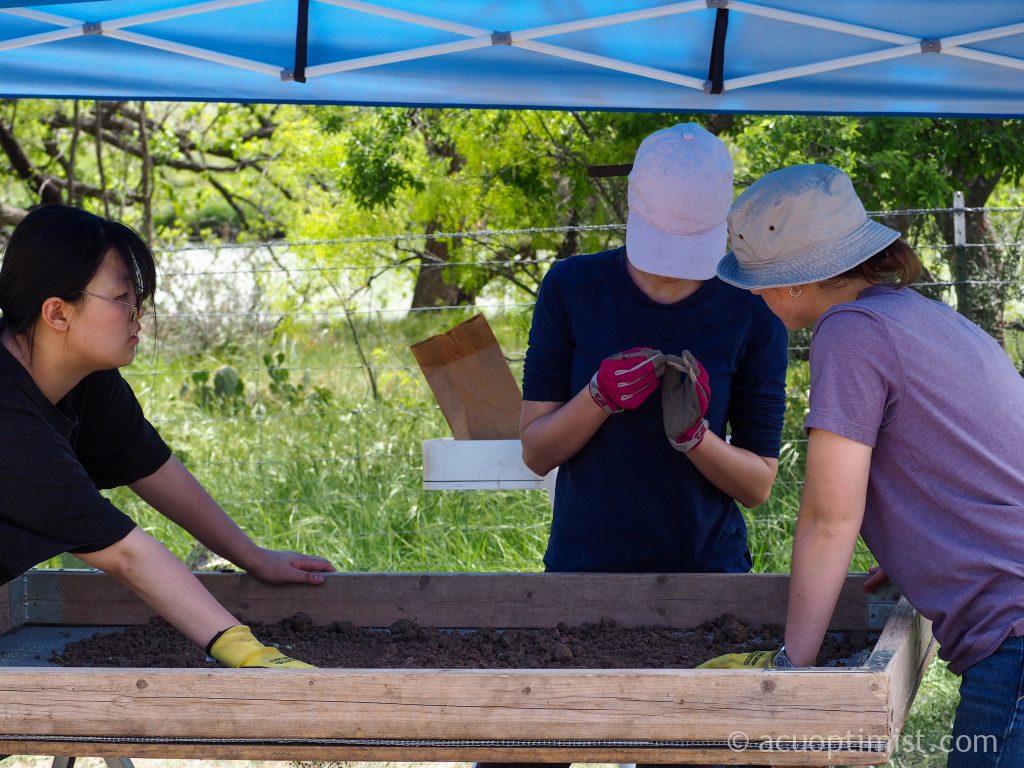Public history students helped at an archaeological dig in Paint Rock this month, working alongside professional archaeologists and interacting with Indigenous elders from various tribes.
Paint Rock is one of the largest rock art sites in Texas. Sitting right outside of San Angelo, a rocky cliff face displays paintings left by Native Americans more than 2,000 years ago.
Students in Dr. Amanda Biles’ HIST 201, Intro to U.S. Public History course helped by digging in designated areas and sifting through buckets of collected dirt in search of artifacts. Students also learned how to document the artifacts they found.
Biles said the experiential learning opportunity was important for public history students not only to get a glimpse of what life as an archaeologist looks like, but also to understand historical objects in the context of their place of origin.
“There’s really no replacement for that true field work kind of experience,” Biles said. “You can hear about an archeological dig, you can look at pictures of artifacts, but until you’re touching them, until you’re screening them out of the dirt yourself, keeping those careful records, then you’re not really getting the full experience.”
Maddie Thompson, sophomore public history major from Keller, said she found the experience particularly valuable as she is considering a career in archeology.
“This is my first time getting real life field experience,” Thompson said. “So getting to come here and getting this opportunity to kind of get a feel for what I want to do was just really, really incredible.”
While at Paint Rock, students also got to interact with Comanche, Lipan-Apache, Payaya and Otomi tribal elders as an exercise in recording oral histories.
“It’s really important to me that a lot of these Indigenous groups and just groups in general that have kind of been marginalized throughout history, and especially in Texas history, really get the chance to tell their stories because those are so important,” Thompson said.
HIST 201 is open to all students and will fulfill the university requirement for a history credit.

